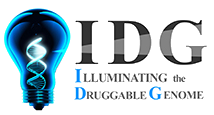Drug results: 7
| ciclopirox | The mechanism of action of ciclopirox has been investigated using various in vitro and in vivo infection models. One in vitro study suggested that ciclopirox acts by chelation of polyvalent cations (Fe+3 or Al+3) resulting in the inhibition of the metal-dependent enzymes that are responsible for the degradation of peroxides within the fungal cell. The clinical significance of this observation is not known. |
|
| salicylic acid | A compound obtained from the bark of the white willow and wintergreen leaves. It has bacteriostatic, fungicidal, and keratolytic actions. |
|
| clobetasol propionate | A derivative of PREDNISOLONE with high glucocorticoid activity and low mineralocorticoid activity. Absorbed through the skin faster than FLUOCINONIDE, it is used topically in treatment of PSORIASIS but may cause marked adrenocortical suppression. |
|
| itraconazole | A triazole antifungal agent that inhibits cytochrome P-450-dependent enzymes required for ERGOSTEROL synthesis. |
|
| carbamide | A compound formed in the liver from ammonia produced by the deamination of amino acids. It is the principal end product of protein catabolism and constitutes about one half of the total urinary solids. |
|
| fluconazole | Triazole antifungal agent that is used to treat oropharyngeal CANDIDIASIS and cryptococcal MENINGITIS in AIDS. |
|
| terbinafine | A naphthalene derivative that inhibits fungal SQUALENE EPOXIDASE and is used to treat DERMATOMYCOSES of the skin and nails. |
|



